If you’re reading this, you likely already know that Latin trap is the new wave. Bad Bunny, Arcángel, Ozuna, Farruko, Anuel AA, and De La Ghetto — these are some of the biggest names in Spanish-language music, and they’re all making songs with sonic roots in the strip clubs of Atlanta. But if you haven’t noticed, most of the artists getting all the shine are Puerto Rican. And while the star-studded posse cut “La Ocasión” is generally considered to be the track that took trap en español worldwide, in part, the Latin trap tsunami started as a small earthquake in New York City clubs, set off by U.S.-born artists of Dominican descent.
Even the Puerto Rican stars will admit that it was the influence of artists in New York that shaped the sound we recognize today. And while they’ve largely been neglected in the conversation, the people that helped Latin trap pop off are still here, still making music, and still influencing other rappers.
At the movement’s epicenter lies DJ Flipstar, a club and radio DJ born in the Dominican Republic and raised in New York. It started with a simple idea: translating popular club bangers into Spanish. “I was just trying to do what hip-hop artists do to this day,” he says, “which is do remixes behind famous songs or hits popping at the time.” The song that got everyone’s attention, Messiah’s “Sí Ta Bien,” was seemingly willed into existence in 2014 by Flipstar; his job at Power 105 got him access to the instrumental before anyone else, he physically brought the track to the studio for Messiah to record his vocals, and then pushed the record in his DJ sets and to all his connections in the club scene. Thanks to the ever-evolving cultural exchanges of the diaspora, the music headed to Puerto Rico, whose musical exports now dominate the charts.
But before we explore just why Dominicans aren’t sharing the spotlight as much as their Puerto Rican cousins (or in the case of Ozuna and Arcángel, their other half – both are Dominican and Puerto Rican), it’s worth asking: What is “trap,” really? The word itself is fraught with dire social implications; before it was used to describe a genre, “the trap” referred to neighborhoods – typically in Atlanta – where drugs were sold on the street. It was “the trap” because if you lived there, you felt just that: trapped. Rappers have been rapping about the trap since hip-hop’s genesis, but the rise of its current usage dovetailed with Southern hip-hop’s.

“The New York scene paved the way for the Puerto Rican scene, because before New York, there wasn’t a Latin trap scene.”
Trap music is clearly rooted in rap music, and at the end of the day, it’s all hip-hop. But this particular branch on the hip-hop family tree has grown large enough to warrant distinctions between trap and rap. Brooklyn’s Lady Vixxen has one of the clearest perspectives on the difference between the two: “In my opinion, trap is more commercial. You’re rapping, but you’re giving them all a bouncy flow to get people to vibe with you. Rap is something that you sit down and you listen to and you listen to the lyrics. [In trap] priority is on the swag. Trap is swag and rap is the lyrics.”
This de-prioritization of language set the stage for a Spanish-language takeover. If Spanish-speaking audiences could rock to music in English they couldn’t understand, why couldn’t the inverse be true? As DJ Flipstar explains it, “The majority of my crowd is Latinos,” he says. “And I’m not talking about Latinos that grew up in New York. I’m talking about Latinos who don’t know nothing but Spanish. They like hip-hop, but they don’t understand what they are saying.” Remixing popular songs is a hip-hop staple — Flipstar just took it a step further, meeting his audience halfway with Spanish-language remixes of popular club tracks.
In that sense, trap en español is essentially wave-riding at a broad cultural level; in its most basic form, it’s more reactive than it is innovative. But within that reaction, these artists are taking something that already exists and making it their own. The rhythms and textures may be borrowed from the U.S. mainstream, but Future doesn’t sound like this — flows in Spanish are a completely different beast, and Dominican Spanglish? That’s something else altogether.
When it comes to the New York-based Dominicans who hopped on the movement early, and the Puerto Ricans that are surfing its crest, there are deep-seated issues at play. Many of the New York Dominican rappers grew up with the city’s deep hip-hop roots; it also can’t be ignored that many of them are black, while their peers in Puerto Rico are lighter. Xenophobia towards Dominicans in Puerto Rico is commonplace; many Dominicans who migrate to the Caribbean island do so looking for stable economic opportunities, which often subjects them to ethnic discrimination. Censorship is also less of an issue in the U.S. commonwealth than it is in D.R., and what’s more, Dominican dembow may be having a moment, but reggaetón is a staple across Latin America and its diasporas.
These artists are taking something that already exists and making it their own.
“I’ve seen it, bro,” says Messiah. “I was in Colombia. You tell them you are Dominican, and they go, ‘Ooooh, Dominican,’ like you’re different. It’s not like when you say ‘Soy Boricua.’ ‘Oh, ¿tú eres Boricua? ¡Oh, qué bien!’” Being Puerto Rican, even if you’re not an artist, they want to take pictures with you.”
Dominirican artists like Ozuna and Arcángel were raised by Puerto Rican parents in Puerto Rico, so it makes sense that they would identify more with that culture. That it’s also more profitable also doesn’t hurt. But the stigma is real. Messiah’s father has two daughters with a Puerto Rican woman, so he technically has Boricua half-sisters. But he balked when he was advised early in his career to play up his connection to the island. “They told me to say that I was mitad puertorriqueño and I said no,” he says. “I swear to everything, they told me, ‘can you say that you have a grandma that’s Puerto Rican?’”
So in an attempt to help gain a clearer picture of how U.S.-based Dominicans have contributed to what is arguably the hottest Spanish-language genre of the moment, we’ve profiled five Dominican rappers based in New York: Messiah, Alina, Lito Kirino, Lady Vixxen and Lors El Prieto (multiple attempts to interview Tali Goya, another pioneer of the movement, were unsuccessful). These rappers have introduced the music to other artists, and guide its evolution beyond Spanish-language remixes of popular hip-hop songs. Most are happy to see their Boricua brethren succeed — indeed, many count them among their friends — but believe they’re overdue for some of the limelight.
“We just want the credit we deserve,” Messiah says. “The New York scene paved the way for the Puerto Rican scene, because before New York, there wasn’t a Latin trap scene.”
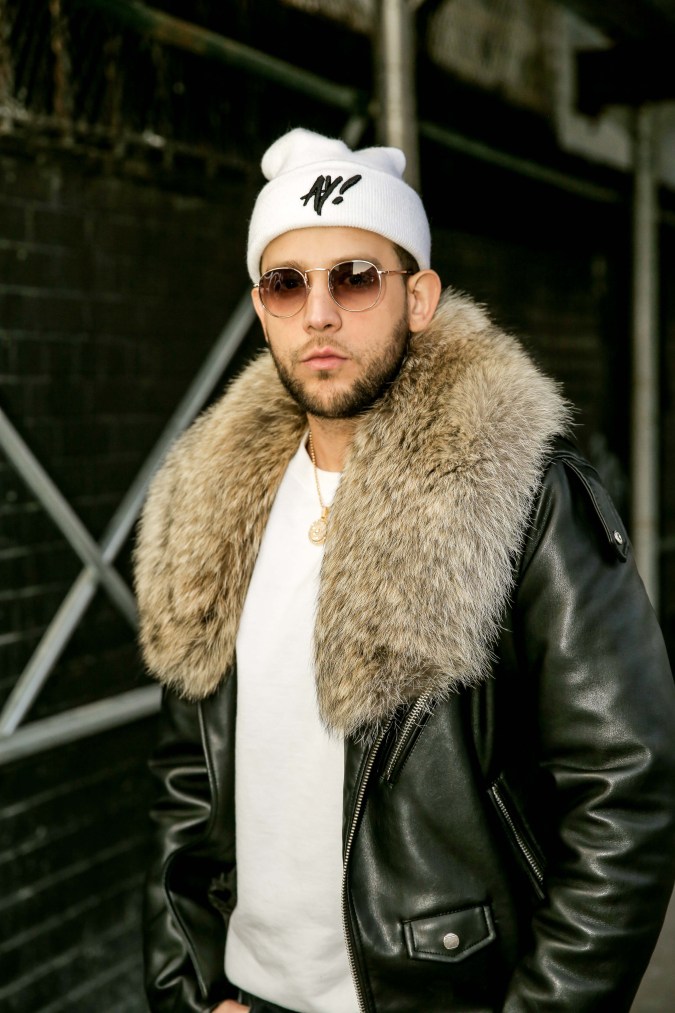
Messiah
The man known as Messiah el Artista wrote his first 16 bars at 11 years old. Like most of the Dominican rappers featured here, he comes from a musical family; his father and uncles were singers. They all knew how to play the guitar, and he remembers them doing renditions of old boleros. But for Messiah, it was always about hip-hop. His Spanish-language version of DJ Self’s Kazzie and Rick Ross track “Yeah OK” is often referenced as the jumping off point for the current wave of trap en español, but he never set out to be a rapper; rather, the music seemed to find him all on its own.
Growing up in Harlem, he met his first collaborator, Tali, in high school. They put out their first records as Tali y Messiah, scoring a local hit with “Ven Donde Mi.” DJ Flipstar was already a neighborhood staple; they had mutual friends and would regularly bump into each other. By 2013, Messiah had been making traction as a solo artist, touring the world with Zion y Lennox. But with the explosion of the trap sound in hip-hop at the time, his own music felt a little stale. “I felt like my beats were sounding out of style with all the new stuff, all the new beats, new production,” he says. “When trap took over, a lot of people changed their flow. Most rappers either adapted to that or their beats started to sound more like the 808s and all that. Because at the end of the day, this is what is on the radio stations.”
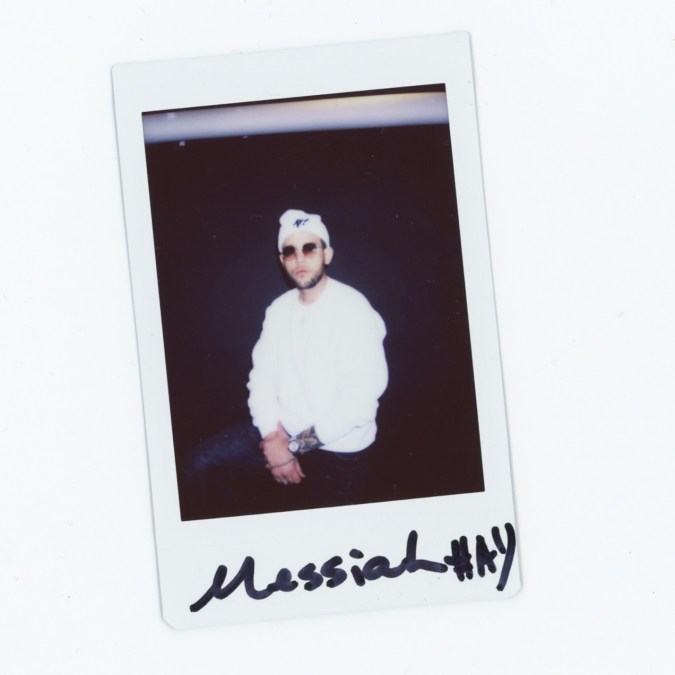
He soon found himself in the right place at the right time to capitalize on the shift. His homie Flipstar was an ironman DJ doing 100 shows a month, feeling the pulse of the club and sensing there was an appetite for the new trap beats with lyrics that his Spanish-speaking audience could understand. He started passing Messiah instrumentals of popular club tracks for them to remix. The first, Rich Homie Quan’s “Type of Way,” became Messiah’s “No Se Siente Bien.” In the club, DJs would mix the records together, sliding back and forth between the English and Spanish versions. The crowds ate it up, and started requesting the Spanish-language version on its own.
Being in the business of giving the people what they want, Flipstar started to look for ways to get ahead of the game. He started working at Power 105, and found himself in contact with DJ Self right around the time he had dropped “Yeah OK” with Kazzie and Rick Ross. Flipstar bugged Self until he gave him the beat, and quickly hit a studio in the Bronx with Messiah and got to work on the remix, “Si Ta Bien.”
“No lie, this kid did that song in 30 minutes,” Flipstar recalls. “I gave him a couple ideas, he wrote the lyrics…he lays the verse, the hook, everything. That same day we went to the club — at the time it was Club Glass, which is now Amadeus, in Queens. There was only like 40 or 50 people, but the way “Si Ta Bien” sounded in the club, we looked at each other like, “This is a hit.” Flipstar pushed it to every DJ he knew in New York, and as it spread, the trap en español remixes started proliferating. When DJ Self heard the remix and started playing it on Power 105, it was official. Messiah started going to clubs with Flipstar when he DJ’d, watching him drop his records and the crowd going nuts. It was like Flipstar had passed him a cheat code to access this audience of New Yorkers starved for trap music in their native language. And he hasn’t looked back.
“If there’s like a trap wave, a Latin trap wave, DJ Flipstar has a lot to do with it,” Messiah says. “The first songs that popped off that were Latin trap had DJ Flipstar on them. “Si Ta Bien,” and a lot of other songs we did afterwards…“Robinson Canó,” “Está Muy Lindo.” He’s like the DJ Drama of this shit…He literally pegó esa canción.”
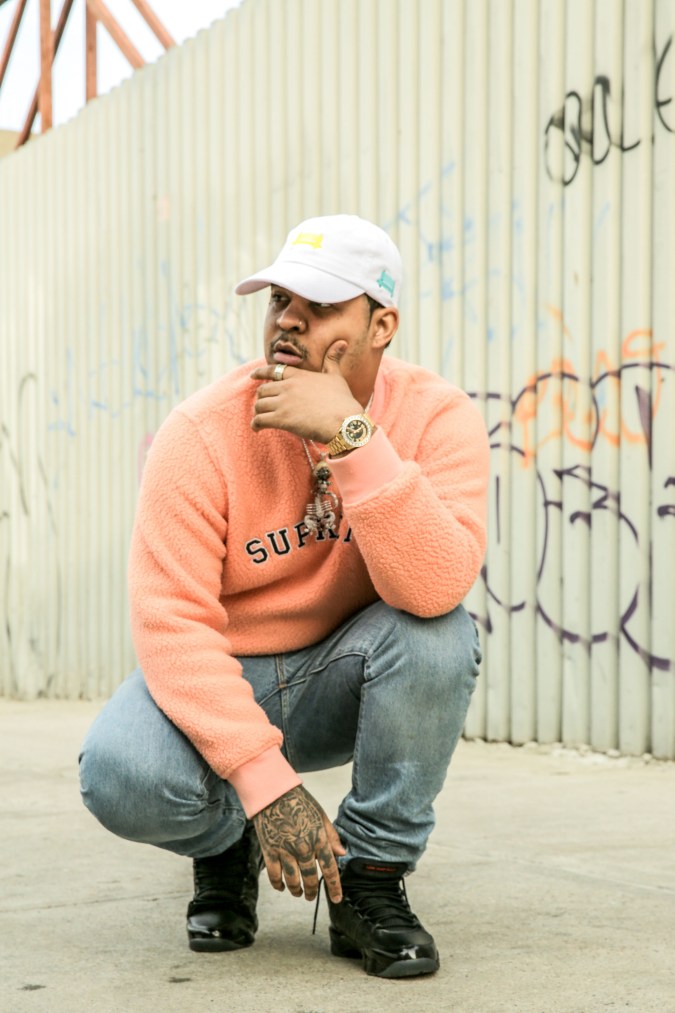
Lito Kirino
Lito Kirino knows about the trap. He grew up in Manhattan with Messiah and Tali, but when Messiah first broke out as an MC, Lito was still out in the streets, hustling — it was his friend’s success that lured him into the rap game. The three of them call Uptown home, their hoods demarcated by just how far Uptown they lived. Kirino is from 160th St. (Washington Heights), Messiah from 134th St. (Harlem), and Tali from 147th and 156th (somewhere in between). As a precocious teen, Lito would throw self-proclaimed “lit-ass house parties,” and play rap records he’d recorded. The music was in him from birth; his father Carlos Grendal played in Grupo Tambó back in the day. But it was hip-hop that spoke to him: the gritty street tales of Mobb Deep, the weird kung-fu wizardry of the Wu-Tang Clan, and Bronx bops from Fat Joe. Even Atlanta rappers had broken through the regional bias from crusty old New York gatekeepers, so when the likes of Ludacris and T.I. broke through, New York cats like Lito and his friends rocked with them.
Dominicans in New York started to have a stake in driving culture on the island.
When it comes to trap music, Lito was first drawn to the distinctive melodies that producers Zaytoven and 808 Mafia were splashing all over the radio. And as a veteran of the streets from a young age, it was the raw perspective from Gucci Mane and Young Jeezy that resonated with him. It didn’t matter that their culture or slang was different. The hood is still the hood, whether you call it el barrio or the trap.
“They had that…when people come from a place where you don’t have shit,” Lito says. “This is like the dirt, the super dirt, for real, from the slums. And you see these n***** with all this jewelry, with all these fucking bands and wheels, with the cars that be jumping. Because these n***** they come from nothing, we really look up to shit like that. Atlanta’s always been on that…that culture, I was always following that shit. New York n***** be following, too, they just don’t be saying it on camera.”
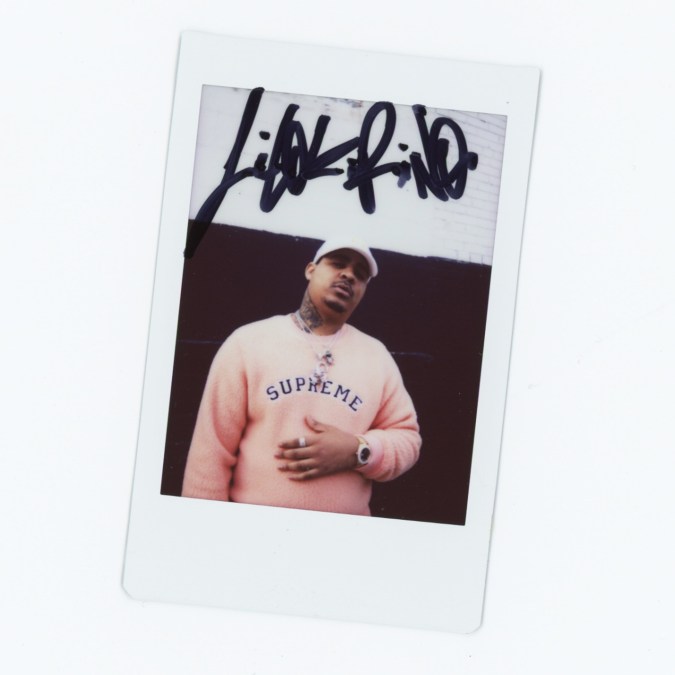
After his homie Messiah blew up (with an assist from DJ Flipstar), Lito started to take the rap game seriously. Messiah connected him with his manager, an entrepreneur named Jimmy Espinosa, whose Yo Yais Music was quickly establishing itself as a pioneer in pushing trap en español to the mainstream. He jumped on features with Puerto Rican artists like Anuel AA and Bad Bunny, and quickly established himself as one of the scene’s strongest MCs.
But if Yaga y Mackie and De La Ghetto flirted with the genre in the 00s, what did New York Dominicans have to add to trap in 2015? For Lito, it’s the slang, first and foremost. Dominican slang is a dynamic dialect, pulling from Spanish and English, yes, but also inventing new words on what seems like a daily basis. And the culture they’re exposed to in the States fuels what pops back in D.R., expanding the conversation to the point that Dominicans in New York started to have a stake in driving culture on the island.
“We’re like Dominican York n*****; we Spanglish with it,” he says. “We speak English because we were born here, but we’re Dominicans because our heritage – parents and all that, grandma…That’s how we become official Dominicans.”
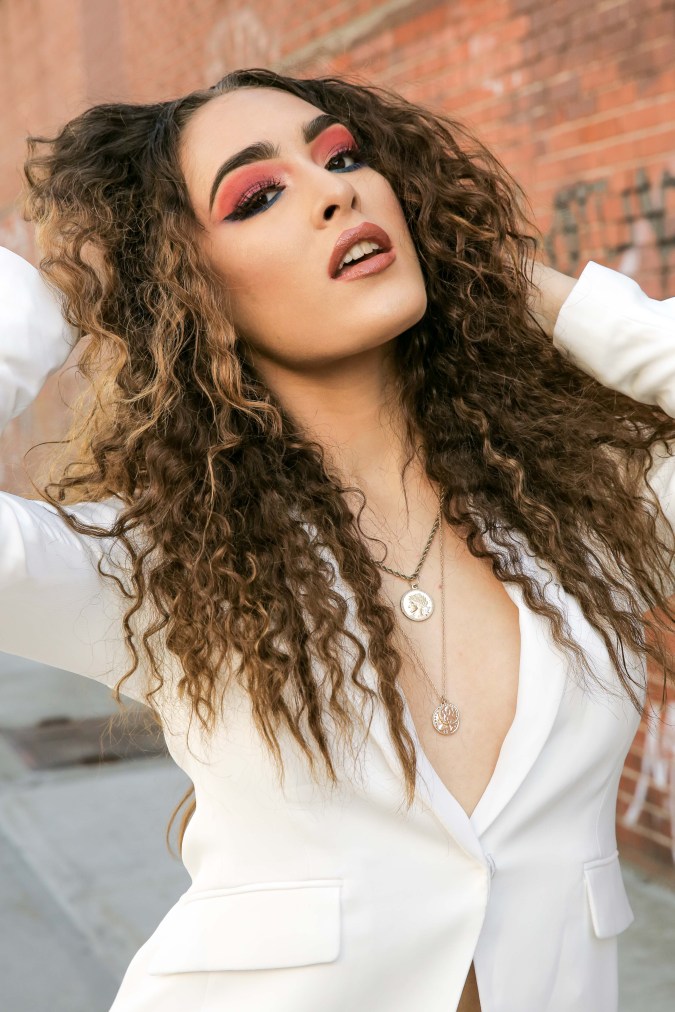
Alina
Alina’s YouTube page hosts a mere five videos, but she’s currently on her second career in music, and she’s just getting started. She cut her teeth as a teen with an R&B trio called G-Pow, playing the role of “the spunky one who can rap.” But the group suffered from jealousy and infighting, ultimately fizzling out after an audition with L.A. Reid failed to materialize into a record deal. She started releasing music as a solo artist just last year, and while she may have taken a more roundabout path to trap, she’s been in the game longer than most.
Alina’s mother was the lead singer in a rock en español band and her father produced records for Ilegales and Proyecto Uno, so she’s been in and out of recording studios and rehearsal spaces since she was a kid. In high school, she met Zelma Davis — of C+C Music Factory fame — who recruited her for the R&B girl group she was putting together with her daughter Zoe, which would eventually become G-Pow. When it came time to go solo, Alina left the R&B behind and embraced the music she grew up with: hip-hop.
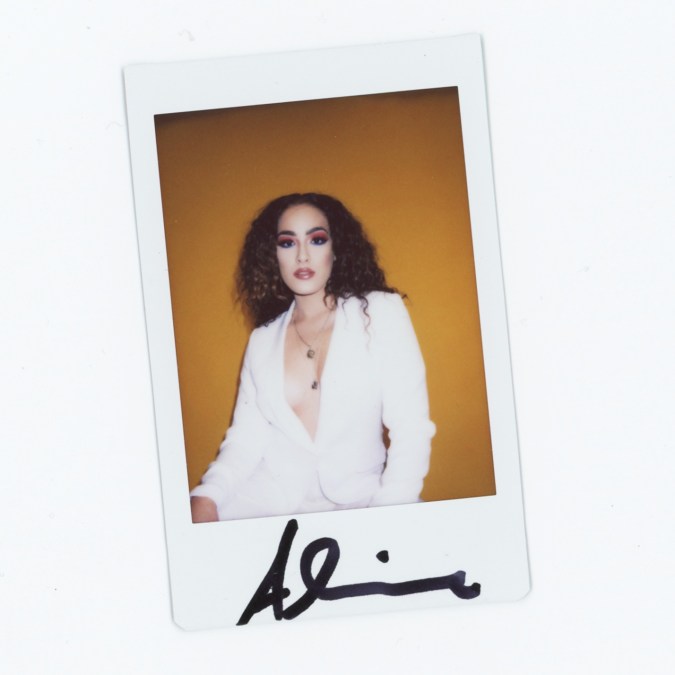
“I always had this love for hip-hop because that’s what I grew up on,” she says. “Biggie, Tupac, Mary J. Blige, and Lauryn Hill.” But it was Messiah that provided the template for what she wanted to do: Rapping over the trap music that dominated the airwaves, in both Spanish and English. And while Messiah benefitted from DJ Flipstar’s audiences, who only speak Spanish and were hungry for trap tracks that they could understand, Alina wants to break into every market, rapping in English, Spanish, and even somewhere in between. “I truly set out to make a Spanglish record, you know,” she admits.
The Spanglish flow is a New York Dominican superpower.
The Spanglish flow is a New York Dominican superpower; it helps distinguish Dominican New Yorkers from their counterparts on the island, and Alina’s is one of the sickest. On one of her tracks, “El Suspiro,” she floats between an English and Spanish flow with incredible ease: “Brillo, tengo brillo, hasta en los bolsillos/they tryin’a suck me/como si yo fuera limonsillo.”
And while Alina credits Messiah with inspiring her current direction, she’s convinced the Latin trap wave has reached even farther than the Caribbean. “The other night, I was at a restaurant — a hookah lounge, actually — and there were Arabs playing trap music [in Arabic]…trap is becoming something worldwide.”
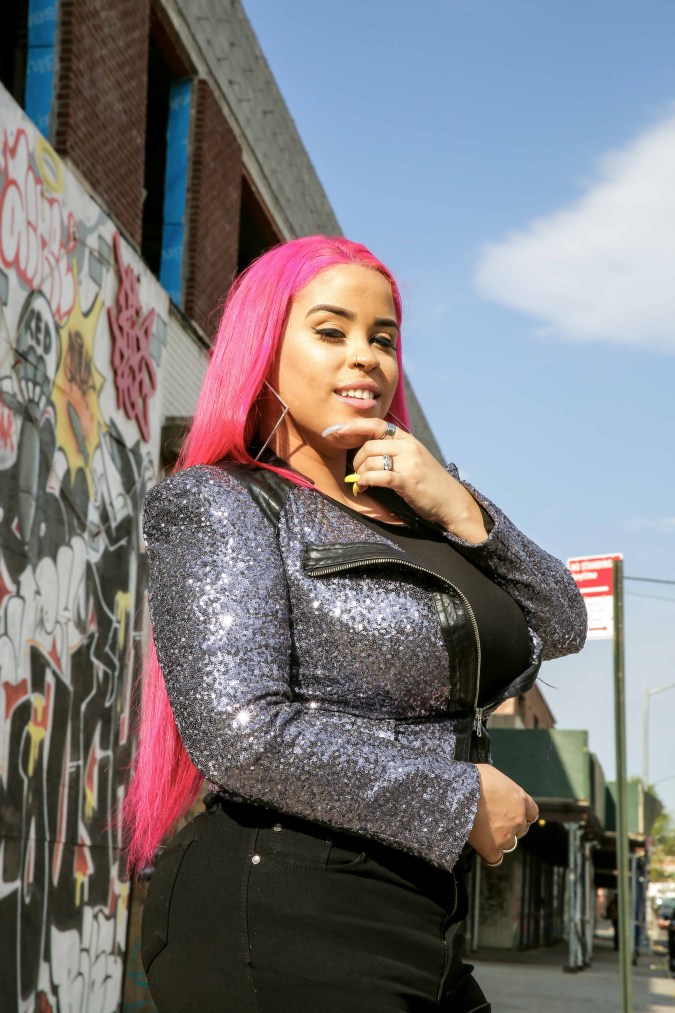
Lady Vixxen
“Okay,” says Sisco Ortega, Lady Vixxen’s manager, “this interview is getting interesting now.” He’s been sitting quietly at a conference room table in the Remezcla office in Brooklyn, listening closely but not speaking as Lady Vixxen recounts her teen years in Williamsburg and the birth of her career. But he perks up at the mention of Ñengo Flow’s “Me Compré Un Full” – he’s ready to spill the tea.
He recounts how the 10-year-old song has had a renaissance, with seemingly everyone with a USB mic and a laptop recording their own version. Lady Vixxen was asked to jump on an official remix with a few other women, but when the time came, they backed out and did the song without her. Unfazed, Lady Vixxen recorded her own version, solo, and patiently waited for the version without her to drop before she posted hers. Her competition may have benefitted from a release on the producer Sinfonico’s YouTube channel, but you can determine for yourself who came harder.
That said, it’s hard to blame the self-proclaimed “Trap Queens” for wanting no part of sharing a track with Lady Vixxen. After all, posse cuts are fun, but you run the risk of getting embarrassed by your peers if you don’t bring your best. And Lady Vixxen’s best is not to be trifled with. She carries a confidence that requires no validation, honed by years of holding her own.
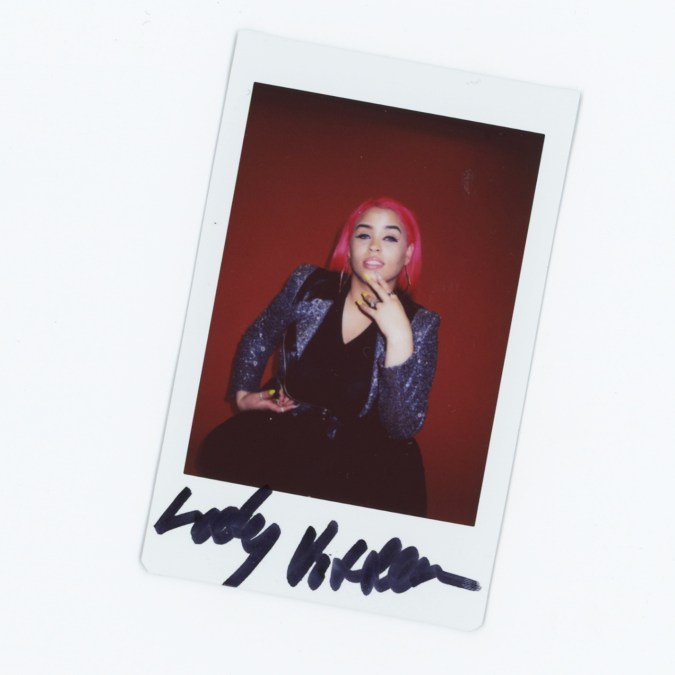
“As a female, it’s very competitive,” she explains. “It’s hard so you have to come harder, if they do it two times, you have to do it five times harder than the men.”
That “five-times-harder” approach seems to have hardened her exterior to the point where people think she looks mean or anti-social. And indeed, when she arrived at Remezcla’s office in Brooklyn, the first thing I noticed was her stoic glare, a reserved expression that revealed little. But behind that icy exterior is an artist who’s intelligent and thoughtful, driven and focused, but also warm and friendly. Basically, don’t start none, won’t be none.
Lady Vixxen was born in the U.S., but raised in the Dominican Republic until she was 16 years old. She was living in a basement in Queens when she first tried her hand at rapping. Her cousin and the homies would hang out, listening to 50 Cent and Lil’ Wayne, writing their lil’ raps. Lady Vixxen laid in the cut, watching, listening, and learning. When she finally asked to jump in, flooring her cousin and his friends with her skills, there was no looking back.
“I’ll jump in to anything, but I will not lower my standards.”
She fell into making trap music reluctantly. Her camp, accurately reading the marketplace, told her that working in the flow-first trap style was her best chance at getting her music in front of a large audience. But she was skeptical. Viewing her own style as a mix of Biggie and 50 Cent, she was determined to maintain her lyrical standards while trying on the flow du jour.
“Swag is more important in trap, and lyrics are more important in hip-hop,” she says. “But to me, to tell you the truth, I can’t do a trap [song] without my lyrics being on point. I don’t consider myself to be a lazy rapper.”
When she first tried to make trap records, she realized the challenge of mastering both the flow and the fire; she relied on her team to hold her to her own high standards. If the flow was tight but the lyrics were weak, they’d send her back to the booth. If the bars were hard but the flow was off, she’d rethink her approach. The legendary MCs — like Biggie — could find the right flow for any beat without compromising the quality of lyrics. And that’s what Lady Vixxen aims to be: one of the greatest.
“I’ll jump in to anything, but I will not lower my standards,” she declares. “My lyrics are always going to be hard no matter what. It could be merengue, bachata, salsa, I’m going to come hard, so you better be prepared for it.”
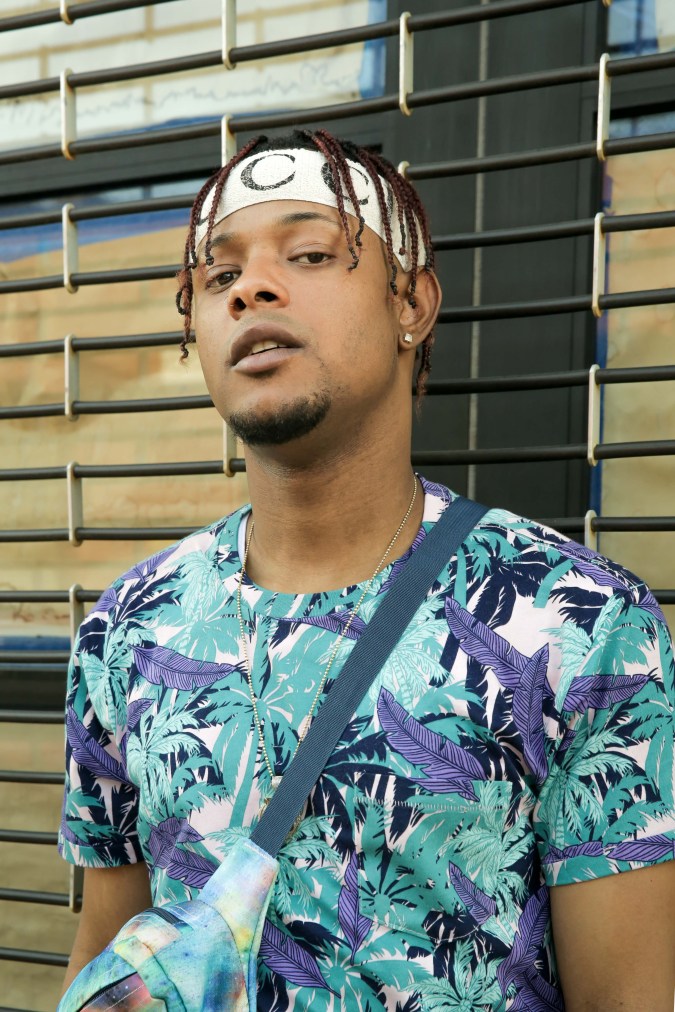
Lors El Prieto
One of the biggest obstacles to success for Dominican artists on the island is their own homeland. The Dominican government has long taken an aggressive stance policing which music is accepted — or even allowed — in society. Over the last few weeks, several Latin trap songs have been banned from radio and public space in the Dominican Republic. From bachata to reggaeton to trap, if the music gets too racy, it gets marginalized, at the state level. Singer-rapper Lors, aka Lors el Prieto, understands this as well as anyone.
One of the biggest obstacles to success for Dominican artists on the island is their own homeland.
“You can’t say anything. Nothing,” Lors explains. “There isn’t much freedom of speech in terms of music. In the streets, everybody speaks how they please, but musically speaking, there’s no freedom. I just saw in the news that they dropped some songs from the radio, including J Balvin’s song with Bad Bunny and Prince Royce, ‘Sensualidad.’”
As far as trap stars go, Lors is relatively tame; he’s probably got more in common with Ozuna than Prince Royce. His musical life began in church — his father was a musician, and Lors would often watch him play with his friends, tag along with him to church to sing. But at 15 years old he met a local rapper who inspired him to write his own raps, and went to visit his studio in a Santo Domingo barrio called San Luis. The “studio” was humble, consisting of a single mic and a computer: no gear, no soundproofing. “If a car drove by, you had to stop recording,” he recalls. “You couldn’t record when it was raining.” It didn’t matter — he was hooked.
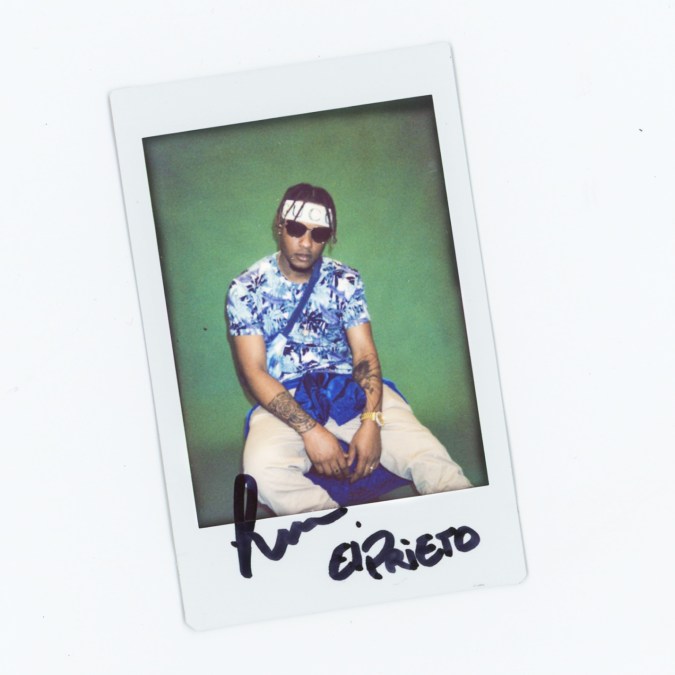
Lors soon joined a group of Christian musicians called Aposento Alto, doing a little rapping, a little singing. Another rapper friend was obsessed with U.S. rap, and introduced him to Nas, the Wu-Tang Clan, and Mos Def. He’d watch 106 & Park on BET, and fell hard for 50 Cent when Get Rich or Die Tryin’ dropped; it even got him into trouble with the more devout members of his family when his U.S. relatives told them what his lyrics were about. But his sights were set firmly on New York, and he finally arrived in 2010. “Now I’m from here,” he says. “I’m from New York City.”
“There isn’t much freedom of speech in terms of music.”
Like Ozuna, Lors has the range; He can do the thugged-out trap anthems (“Pacas de Cien”), trap-pop megahits (“Trapstars, ft. Lito Kirino”), and even more romantic fare (“Escondido”). He seems less concerned with riding any one particular wave than he does celebrating his freedom to make whatever kind of music he wants to make.
“My focus right now is not to do what everybody is doing or, jumping on the bandwagon,” he says. “That’s never been my focus. If you see the sequence of my career, I always do weird stuff. The last song and video I released, ‘Frasco De Pastillas,’ it’s not trap or anything like that. I wanted to do that. Because I could do it. I don’t create music based on something someone else has done.”
It’s unclear whether Lors’ “weird stuff” will resonate with fans like the trap songs do. But as he develops as an artist and gets a feel for what he likes — and doesn’t — his creativity should set him up nicely to keep riding once the current trap wave has crested.




